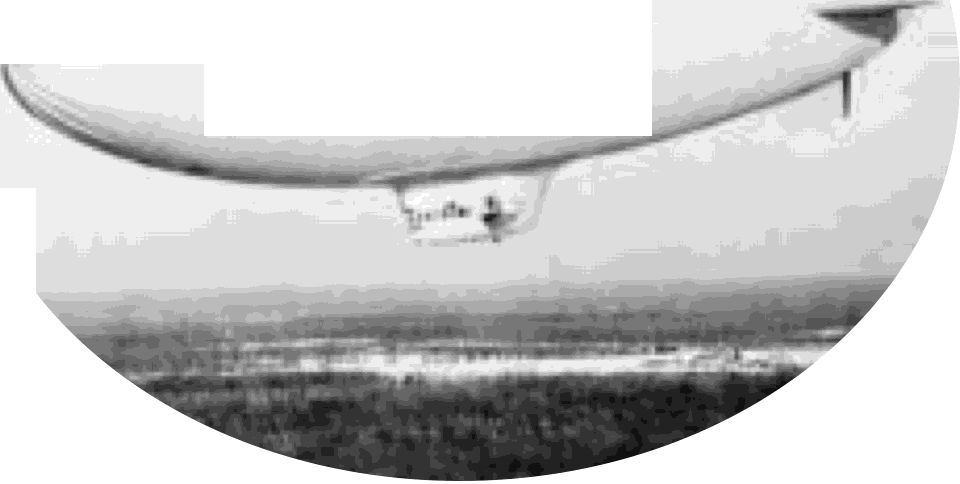
94
UNITED STATES NAVAL AVIATION
1910-1995
1938-Contin ued
enlisted students, and gameboard problems were
introduced as a practical approach to instruction in
scouting and search.
1 December
The Hepburn Board, appointed by the
Secretary of the Navy in accordance with the act of 17
May, reported on its survey of the aviation shore
establishment. Recognizing the demands that would
have to be met if the approach of war should precipi-
tate a great expansion, the Board recommended for
aviation the enlargement of 11 existing stations and
the erection of 16 new ones, including Oahu
(Kaneohe), Midway, Wake, Guam, and five other
Pacific Islands.
16 December
The K-2 airship was delivered to NAS
Lakehurst, N.J., for trials. This was the prototype for
the World War II K Class patrol airships, of which 135
were procured.
\
,...,1
.-:
The non-rigid aiJ:5hip K-2, prototype for World War II LTA fleet 1053773
1939
27 March
Following the successful experimental
refueling of patrol planes by the submarine
Nautilus
(SS 168), the Commander-in-Chief U.S. Fleet (CIN-
CUS), directed that Submarine Division Four and
Patrol Wing Two conduct refueling tests at frequent
intervals and carry out an Advanced Base problem
each quarter to develop to the utmost the possibilities
for refueling patrol planes under various conditions.
7 April
An amphibian version of the PBY flying boat
was ordered from Consolidated. This aircraft, the first
successful amphibian patrol plane procured by the
Navy, was the prototype for the PBY-5A which was
widely used in World War II.
15 May
A contract was issued to Curtiss-Wright for
the XSB2C-l dive bomber, thereby completing action
on a 1938 design competition. The preceding month,
Brewster had received a contract for the XSB2A-l. As
part of the mobilization in ensuing years, large pro-
duction orders were issued for both aircraft, but seri-
ous managerial and developmental problems were
encountered which eventually contributed to discard-
ing the SB2A and prolonged preoperational develop-
ment of SB2C. Despite this, the SB2C Helldiver would
become the principal operational carrier dive bomber.
27 May
Lieutenant Colonel Alfred A. Cunningham,
first U.S. Marine Corps aviator, died at his home in
Sarasota, Fla. He reported for flight training at
Annapolis, Md., on 22 May 1912, a day now celebrat-
ed as the birthday of Marine Corps aviation; and in a
relatively short aviation career, served with distinction
in many capacities. During World War I, he organized
and commanded the first Marine aviation unit, was
among those proposing operations later assigned to
the Northern Bombing Group and was commanding
officer of its Day Wing. In the postwar period, he
served as the first administrative head of Marine Corps
aviation and then commanded the First Air Squadron
in Santo Domingo.
13 June
Saratoga
and the tanker
Kanawha
(AO 1)
completed a 2-day underway refueling test off the
coast of southern California, thereby demonstrating
the feasibility of refueling carriers at sea, a technique
which was to prove vitally important to operations in
areas where bases were not available.
13 June
The Aviation Cadet Act of 1935 was revised
to provide for the immediate commissioning as
ensigns or second lieutenants of all cadets on active
service and the future commissioning of others upon
completion of flight training. The law also extended
the service limitation to seven years after completion
of training of which the first four would be required,
and provided for promotion to the next higher grade
on the basis of examination after three years of ser-
vice. A reduction in the bonus payment upon release
to inactive duty was made with the provision that avi-
ation cadets already serving in the fleet be given the
option of remaining on the old pay scale with the
$1,500 bonus or of accepting commissioned pay and
the new $500 discharge payment.
1 July
A standard system of numbering patrol
squadrons in reference to wings was adopted by which
 |
18 |
 |